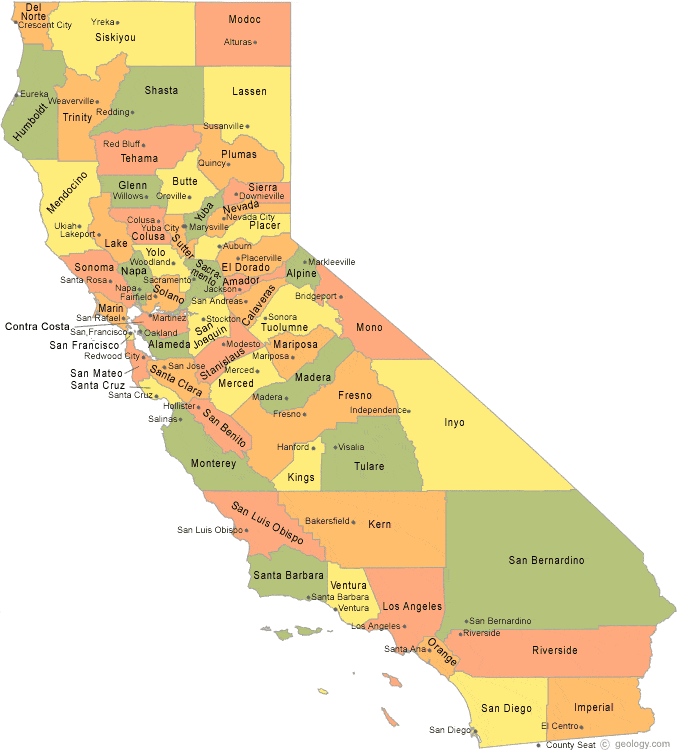California County List: How Many Counties and What Makes Each Unique
California County List: How Many Counties and What Makes Each Unique
Blog Article

Curious to know what the exact county count in California is? You’re certainly not the only one. Whether it’s for school projects, travel plans, or simple trivia, the magic figure 58 always surfaces, yetthose two digitsonly tells half the story.
California’s counties forma patchwork of contrasts: surf-washed beach cities, pine-covered mountain regions, vast agricultural heartlands, and thriving tech metropolises. None of these counties lacks a unique backstory, forged throughimmigration waves, cutting-edge innovation, and relentless population booms.
In the sections ahead, we’ll explore why California ended up with 58 counties, the real responsibilities counties shoulder, and the outliers that set fascinating records. Ultimately, you’ll own the knowledge—and sound like a local expert with confidence.
Origins of California’s 58 Counties
On statehood day in 1850, the map looked nothing like today’s. A tidal wave of forty-niners and immigrants pushed officials to subdivide vast districts. Within twenty years, the count had expanded toward over five dozen counties, and by 1907 the final five were added, cementing the official total of fifty-eight.
Assembly journals reveal that most new counties stemmed from three major pressures:
- Sheer distance made court access impossible.
- Economic clashes between miners and farmers ignited partition drives.
- Cultural rivalries wanted self-rule.
By 1920, the political map settled. Today, even bold secession schemes rarely get how many counties does california have ballot traction, prompting analysts to call the era of county making decisively over.
Landscape and Climate Diversity Across California Counties
Plot a route from foggy Crescent City to sun-baked Imperial touching Mexico, and you’ll cross every Köppen zone short of tundra. Ocean-brushed jurisdictions soak up fog-cooled summers, while interior giants like San Bernardino or Kern record triple-digit heat.
- Sierra jurisdictions such as Placer, Nevada, and Alpine host ski resorts.
- Sacramento–San Joaquin fringe counties balance peat islands and orchards.
- Off-shore authorities like Los Angeles license film crews on beaches.
This breadth clarifies how water rights, zoning, and ag yields diverge so sharply. Weather sets tax bases and lifestyles.
What Counties Actually Do
Amid Sacramento’s delegated framework, municipalities handle zoning, but counties shoulder crucial baseline services that make communities livable. Life’s paperwork trail—marriage licenses, tax rolls, voter registries—all reside at the registrar of voters.
Elected sheriffs patrol unincorporated land, while county benches hear civil suits. Social-services bureaus distribute food assistance. Budget battles spark long agenda nights.
Case Study: Tiny Alpine County
Los Angeles County alone employs 100 000+ workers, illustrating how flexible county governance proves. Uniformity would never work when land areas shift from 47 to 20 000 sq mi.
At day’s close, county halls act as middle managers between Capitol and curbside. Knowing their role empowers voters.
Population, Economy, and Record-Holding Counties
California houses over 39 million residents, but the headcount collects in dramatic clumps. LA’s single jurisdiction packs nearly 25 %. Conversely, tiny Alpine County rarely tops 1 200 inhabitants.
- Most populous: Los Angeles
- Least populous: County of Alpine
- Biggest footprint: San Bernardino County
- Smallest area: San Francisco
Economically, the disparities are just as sharp. South Bay enclaves report six-figure median incomes, while Central Valley breadbaskets face commodity price swings. These fiscal contrasts informs legislative redistricting every decade.
Tracking each superlative pays dividends: county borders redraw home-buying budgets and business licences.
Touching All Counties in One Journey
For intrepid travellers, visiting every single county ranks as a top geo-challenge. The classic route kicks off in San Diego, heads north along Highway 1, jogs east near Monterey, then threads through rice-field flats and orchard grids, before ascending into the Sierra Nevada for historic gold-rush hamlets.
Regional Mini-Loops
- Southern Swing – Border to wine country; 10 counties in three days.
- Heartland Stretch – Ventura to Sacramento; flat-land express.
- Lava Beds Detour – evergreen corridors; hidden hot springs.
Finish the circuit in El Centro, having logged 1 400–2 000 miles. After that, you can brag that you’ve lived the answer to the county-count question—having grabbed selfies at every line marker.
California County FAQ
Curious about California’s 58 counties? The following FAQ has you covered.
How many counties are in California?
State records confirm 58 counties—a number that hasn’t changed since 1907. Check any authoritative source, and you’ll find the same figure: 58.
Where do the most Californians live?
LA County leads by a wide margin, housing roughly one in four Californians. Decades of immigration, entertainment dominance, and job growth keep the numbers high.
Which CA county has the fewest residents?
The crown for smallest population goes to Alpine County, rarely crossing the 1 200-resident mark. Location along rugged mountain corridors keeps growth modest, creating tight-knit communities.
Which county covers the largest land area in California?
Geographic titan San Bernardino County encompassing deserts, mountains, and metro suburbs alike. From Joshua trees to ski lifts, few regions illustrate California’s contrasts so vividly.
What historical events fixed the number at 58?
Gold-rush politics, rail expansion, and farmland disputes carved today’s boundaries, ending when Imperial County formed in 1907. While secession talk appears now and then, no plan has passed statewide hurdles.
Could a region break away to become its own county today?
Legally, yes—state law allows it, but the hurdles are steep. Financial viability studies plus state-level sign-off deter most would-be county creators. That’s why no county lines have moved since the early 1900s.
What services do California counties provide to residents?
Counties handle the backbone of local governance: property assessments, public hospitals, welfare programs, and jails. Without county infrastructure, everything from jury duty to restaurant inspections would grind to a halt.
Report this page